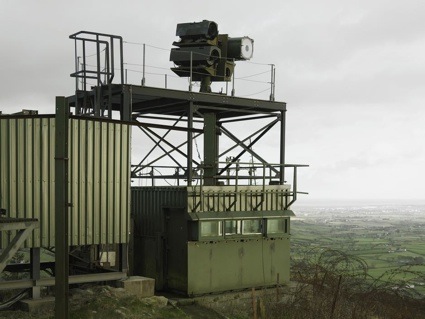 Northern Ireland. South Armagh. Golf 40 (salent tower). 2006
Northern Ireland. South Armagh. Golf 40 (salent tower). 2006
I used to go to the Imperial War Museum in London just to watch the hanging planes, the V2, the tanks, etc. The place is under renovation right now and i stopped paying attention to their programme (the war machines are wrapped up somewhere.) Big mistake! A few weeks ago, they’ve opened Donovan Wylie: Vision as Power, a show that explores the impact of military architecture on the landscape.
Vision as Power brings together five projects from radically different parts of the world but that are interconnected through the surveillance apparatus. Donovan Wylie grew up in Belfast during the Troubles and living under military surveillance has had an undeniable impact on his work.
The Maze was one of Wylie’s earliest investigations into the relationship between power, surveillance and control during the Troubles.
Built in 1976 to house terrorist prisoners, the Maze prison segregated men according to their political beliefs and membership of paramilitary organizations.
Wylie started working on the series in 2002, just as the prison had closed under the terms of the Good Friday Agreement and the last inmates had been transferred to other prisons.
 Northern Ireland. The Maze Prison. H-Block 5. Excercise Yard B. 2003
Northern Ireland. The Maze Prison. H-Block 5. Excercise Yard B. 2003
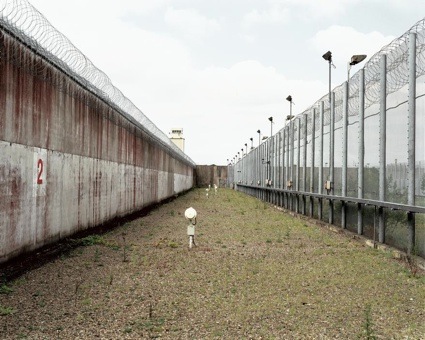 Northern Ireland. The Maze Prison. Inertia Stage 2. 2003
Northern Ireland. The Maze Prison. Inertia Stage 2. 2003
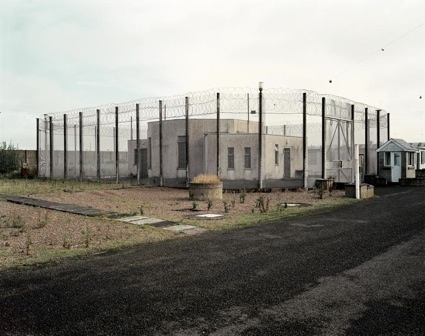 Northern Ireland. The Maze Prison. Chapel, Phase 3. 2003
Northern Ireland. The Maze Prison. Chapel, Phase 3. 2003
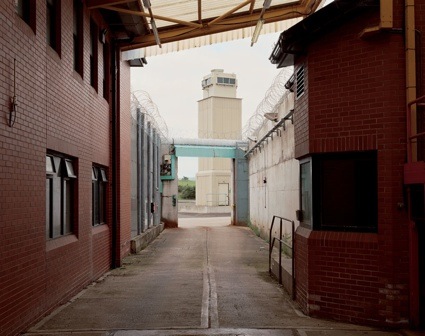 Main Gate, North Wall, Maze Prison, Northern Ireland, 2003 © Donovan Wylie/Magnum
Main Gate, North Wall, Maze Prison, Northern Ireland, 2003 © Donovan Wylie/Magnum
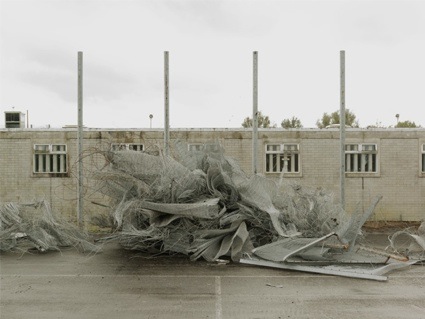 Donovan Wylie, Fence. Deconstruction of Maze Prison. Maze Prison. Northern Ireland, 2009, from the series The Maze. Courtesy of the artist
Donovan Wylie, Fence. Deconstruction of Maze Prison. Maze Prison. Northern Ireland, 2009, from the series The Maze. Courtesy of the artist
Wylie then extended his research to the British Watchtowers, the surveillance architecture built at the height of the Troubles, when South Armagh was one of the most heavily militarised areas of Northern Ireland. The British army built a network of watchtowers and observation posts in order to control cross-border smuggling and paramilitary attacks but also to maintain an intimidating presence.
As part of the Northern Ireland Peace Process, the watchtowers were dismantled between 2005 and 2007. As Whyle documented their presence in the surrounding countryside, British troops were deploying to Afghanistan, taking with them elements of the Northern Ireland watchtowers.
The Maze informed the watchtowers, and the watchtowers informed the Afghanistan work. I wanted to show this evolution, the photographer explained in an interview for the British Journal of Photography. When I was making the pictures of the watchtowers, they were coming down [being dismantled] and many of the soldiers working on them were going to Afghanistan. Elements of the structures were being taken to Afghanistan. Modern warfare is very transient, it is built to move, but basically it’s the same idea regardless of nationality or politics or whatever – take the high ground and use vision as a method of strength and protection. Ultimately what I think is fascinating is how we use landscape as a tool of war.
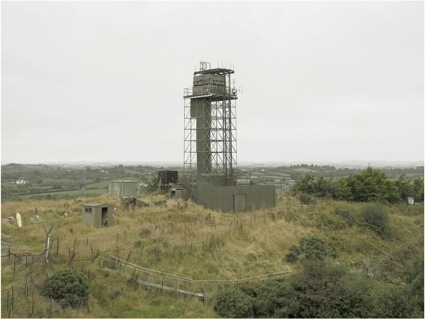 Northern Ireland. South Armagh. Golf 20. 2005
Northern Ireland. South Armagh. Golf 20. 2005
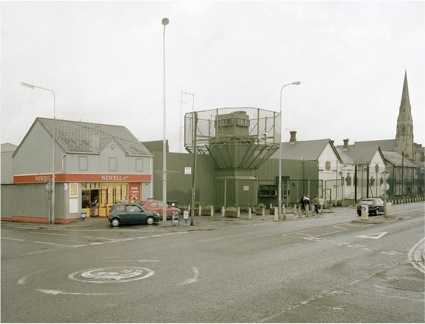 Northern Ireland. Observational sanger, Cookstown. County Tyrone. 2000
Northern Ireland. Observational sanger, Cookstown. County Tyrone. 2000
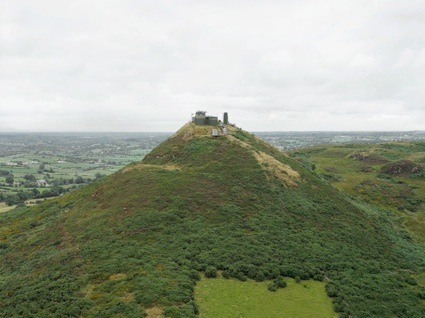 Romeo 12, South Armagh, Northern Ireland, 2005
Romeo 12, South Armagh, Northern Ireland, 2005
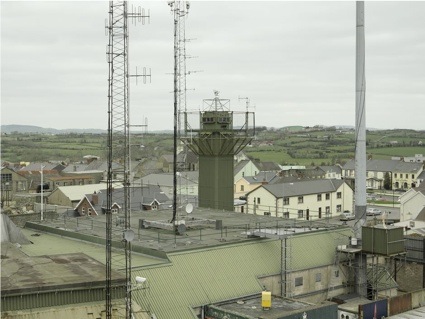 Northern Ireland. South Armagh. Crossmaglen town. Golf 650. 2006
Northern Ireland. South Armagh. Crossmaglen town. Golf 650. 2006
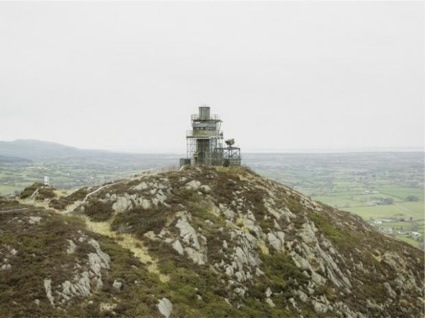 Northern Ireland, 2006. South east view of Golf 40, British Army surveillance post in South Armagh
Northern Ireland, 2006. South east view of Golf 40, British Army surveillance post in South Armagh
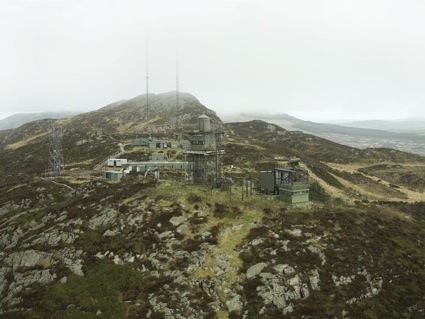 Northern Ireland. South Armagh. Golf 40AB. North east view. 2006
Northern Ireland. South Armagh. Golf 40AB. North east view. 2006
From 2006 to 2011, Canada sent nearly 3,000 military personnel to Afghanistan where military engineers designed a system of outposts throughout Kandahar province. Built on natural promontories and commanding multiple lines of sight, these outposts offer a fascinating parallel with the British Watchtower, as both networks ensured oppression and control in the name of a “war” against terrorists.
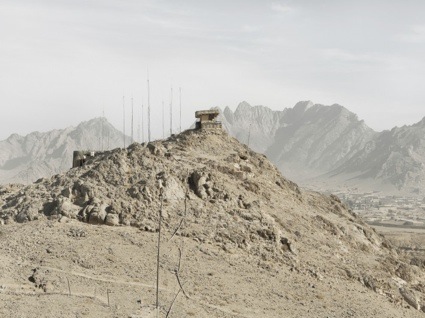 Donovan Wylie, FOB Masum Ghar, Kandahar Province, Afghanistan, 2010, © Donovan Wylie/Magnum Photos
Donovan Wylie, FOB Masum Ghar, Kandahar Province, Afghanistan, 2010, © Donovan Wylie/Magnum Photos
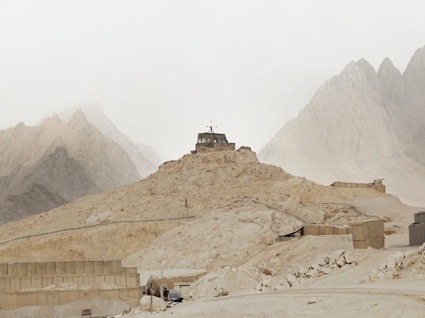 OP1. Forward Operating Base, Masum Ghar. Kandahar Province, Afghanistan, 2010 © Donovan Wylie/Magnum
OP1. Forward Operating Base, Masum Ghar. Kandahar Province, Afghanistan, 2010 © Donovan Wylie/Magnum
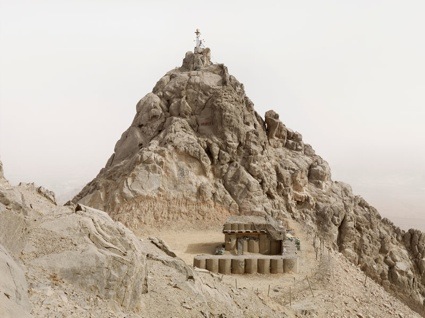 OP3. Forward Operating Base, Masum Ghar. Kandahar Province, Afghanistan, 2010 © Donovan Wylie/Magnum
OP3. Forward Operating Base, Masum Ghar. Kandahar Province, Afghanistan, 2010 © Donovan Wylie/Magnum
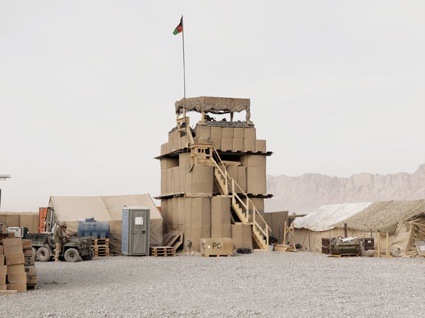 Watchtower, Combat Operating Post, Folad, Kandahar Province, Afghanistan, 2011 © Donovan Wylie/Magnum
Watchtower, Combat Operating Post, Folad, Kandahar Province, Afghanistan, 2011 © Donovan Wylie/Magnum
Another series shown at the IWM explores American defensive structures in Baghdad, Iraq. The Green Zone was the international administrative zone of central Baghdad, controlled by the Coalition forces during the Second Iraq War. Wylie saw similarities in the way people were contained in the Green Zone and how they were imprisoned in the Maze.
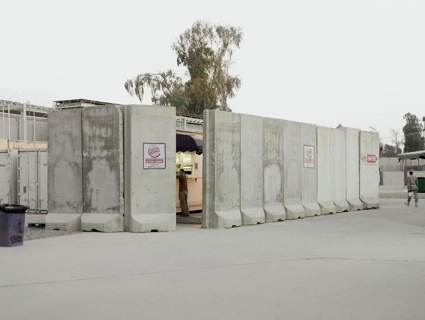 Iraq. Baghdad, 2008. The “Green Zone”
Iraq. Baghdad, 2008. The “Green Zone”
Wylie’s series Arctic closes the exhibition. The white and extreme environment is home to cyber radar stations unmanned and operated electronically to detect any presence seeking out lucrative natural resources along Canada’s Arctic frontier made more fragile by global warming and the new routes though the Northwest Passage it enabled. Once again, the only analogy is with dystopian sci-fi. To Wylie, they are a striking example of surveillance attempting to deter future conflict.
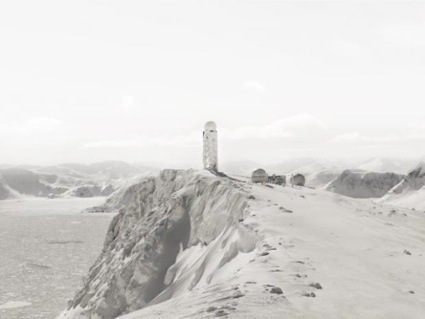 Canadian Arctic, 2013. LAB 1 Royal Canadian Air Force Short Range Radar installation
Canadian Arctic, 2013. LAB 1 Royal Canadian Air Force Short Range Radar installation
Ultimately, the exhibition reminds us that surveillance is not confined to the spaces of military conflict. Surveillance is the default characteristic of our society, as the revelations about the extent of mass online surveillance have recently demosntrated.
Donovan Wylie: Vision as Power is at the Imperial War Museum in London until 21 April 2014.
